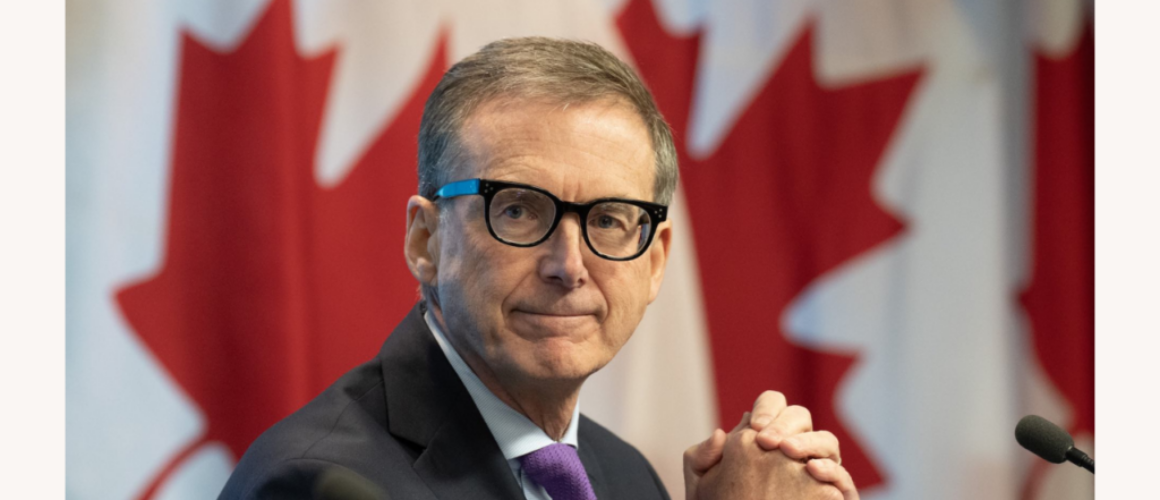Bank of Canada Holds Firm: Inflation Eases, But Policy Uncertainty Clouds Markets
Ottawa, ON – The Bank of Canada (BoC) held its overnight lending rate at 4.75% for the fifth consecutive meeting this month, as it continues to walk the fine line between controlling inflation and avoiding an economic stall. While inflation has cooled from its 2022–2023 highs, it remains sticky in essential categories—especially housing, groceries, and services.
Markets reacted cautiously. While equity indices edged up on the news, bond yields remain volatile and business confidence surveys show continued hesitation in capital investment. At the heart of the uncertainty: the question no one can confidently answer—when will rate cuts begin?
Inflation: Cooling, but Unevenly
Headline inflation has dropped to 3.1%, down from its post-pandemic peak of over 8%. However, the Bank’s preferred core inflation metrics—which strip out volatile items like gasoline and fresh produce—remain stubbornly above 3.5%.
Most worrying is service sector inflation, driven by wage growth, healthcare costs, and insurance premiums. Rent inflation is particularly high in metro centers like Toronto and Vancouver, where tight housing supply continues to distort CPI readings.
Grocery prices, while decelerating, are still 8–10% higher than a year ago for key staples like meat, dairy, and produce. Retailers and wholesalers blame persistent supply chain bottlenecks, labor shortages, and carbon pricing impacts for the slow normalization.
BoC’s Dilemma: The Risk of Moving Too Early—or Too Late
Bank of Canada Governor Tiff Macklem emphasized in his statement that “we are seeing meaningful progress, but not enough to justify easing.”
His concern: a premature rate cut could ignite consumer demand at a time when supply-side frictions are still in play, pushing prices back up and eroding hard-earned credibility.
However, many economists warn of the opposite risk: if rates stay too high for too long, Canada could slip into a mild recession by early 2026. Consumer spending is already slowing, household debt service ratios are rising, and SME lending has tightened dramatically.
It’s a classic central banking tightrope—with no obvious safe footing.
Market Reaction: Volatility and Rotation
Investors greeted the BoC’s decision with restrained optimism. The TSX posted modest gains, led by defensive sectors such as utilities, telecoms, and dividend-paying industrials.
Bond markets were more cautious. Yields on 2-year and 10-year Canadian government bonds edged higher, reflecting expectations that rate cuts may now be delayed until at least September or October 2025.
Mortgage lenders have begun to adjust accordingly. Variable rate products remain unattractive, while fixed-rate mortgages have hovered above 5.5%, further dampening demand in housing and construction sectors.
Currency markets, meanwhile, kept the Canadian dollar stable around 0.74 USD, reflecting balanced market sentiment rather than confidence.
Consumer and Business Confidence
Confidence indicators reveal a nation in wait-and-see mode:
-
Consumers are delaying large purchases and drawing down pandemic-era savings
-
Businesses, especially in tech and retail, have frozen hiring or downsized operations
-
Exporters are cautiously optimistic amid better global commodity demand but fear future trade disruptions
Retail sales growth slowed to just 0.6% in Q1, with big-ticket items like vehicles and appliances seeing double-digit year-over-year drops.
What Will Trigger a Cut?
The Bank has been clear: it needs to see clear, sustained declines in core inflation and wage pressures. However, internal forecasts suggest that these may not materialize until late summer or early fall.
Three factors that could speed up a pivot:
-
Sharp unemployment rise – If national jobless rates cross 7.5%, the Bank may prioritize growth over inflation control.
-
Housing market contraction – A prolonged real estate freeze could trigger spillover effects across industries.
-
Global deflationary signals – A slowdown in U.S. or European demand could justify a coordinated easing response.
Looking Ahead
As of now, the Bank of Canada’s strategy is one of patience with caution. Its credibility remains intact, but pressure is building—from households, businesses, and even provincial governments—to begin loosening the grip on monetary policy.
Whether the Bank can engineer a soft landing without triggering renewed inflation or recession will define not only its legacy, but Canada’s economic trajectory for years to come.
